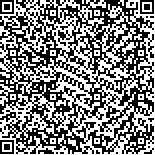李莹莹,张备,李策,刘培乐,梁丹,管一晖,鲍伟奇,孔艳艳,焦方阳,白玉龙.强制性运动对脑缺血再灌注大鼠前肢运动功能及情绪相关脑区葡萄糖代谢的影响[J].中华物理医学与康复杂志,2015,37(7):481-486
扫码阅读全文

|
| 强制性运动对脑缺血再灌注大鼠前肢运动功能及情绪相关脑区葡萄糖代谢的影响 |
|
| |
| DOI: |
| 中文关键词: 强制性运动 脑缺血 微型正电子发射型电子计算机断层显像 葡萄糖代谢 情绪反应 |
| 英文关键词: Constraint-induced movement therapy Cerebral ischemia Reperfusion Tomography micro PET Glucose metabolism Emotional reactions Stroke |
| 基金项目:国家自然科学基金资助项目(81372119);上海市科委自然基金(12ZR1404000);上海市卫计委科研项目(20134124) |
|
| 摘要点击次数: 3505 |
| 全文下载次数: 4989 |
| 中文摘要: |
| 目的探讨强制性运动疗法(CIMT)对脑缺血再灌注(MCAO)大鼠前肢运动功能及情绪相关脑区葡萄糖代谢的影响。 方法选取22只健康SD大鼠,按照随机数字表法将其分为实验组(6只)、对照组(6只)、假手术组(6只)、正常组(4只)。实验组和对照组通过线栓法建立大鼠MCAO模型,假手术组手术中不阻断大脑中动脉,正常组不予以特殊处理。术后,实验组大鼠进行CIMT治疗。术前、术后7d、术后22d,采用错步实验(FFT)对大鼠的前肢运动功能进行评估。术后7d及22d,采用微型正电子发射型电子计算机断层显像(micro PET)对大鼠情绪相关脑区的葡萄糖代谢情况进行扫描。 结果实验组缺血期血流值占基础值的比例(0.23±0.01)与对照组缺血期血流值占基础值的比例(0.24±0.01)比较,差异无统计学意义(P>0.05)。术后7d,实验组、对照组大鼠错步率较术前明显增高(P<0.05)。与术后7d比较,实验组、对照组大鼠术后22d的错步率显著降低(P<0.05)。与组内术后7d比较,实验组大鼠术后22d伏隔核的葡萄糖代谢水平较高(P<0.05)。术后7d,实验组和对照组右侧中脑腹侧背盖区呈明显激活状态。术后22d,实验组情绪相关激活脑区位于右侧岛叶皮质、伏隔核及中脑腹侧背盖区。术后22d,对照组右侧中脑腹侧背盖区的葡萄糖代谢水平(1.72±0.04)较假手术组和正常组增高(P<0.05)。 结论CIMT可提高MCAO大鼠患侧前肢的运动功能,同时可能会引起其产生厌恶情绪,关注并消除CIMT所带来的负面情绪,对临床脑卒中患者的康复治疗具有一定的参考意义。 |
| 英文摘要: |
| Objective To observe any neuroprotective effects of constraint-induced movement therapy (CIMT) in ischemic rats using positron emission tomography (PET). Methods According to a random number table, twenty-two adult male Sprague-Dawley rats were divided into an ischemic group treated with CIMT (CIMT, n=6), an ischemic group (Control, n=6), a sham-operated group (Sham, n=6), and a blank control group (Normal,n=4). Middle cerebral artery occlusion (MCAO) was performed on the rats in the CIMT group and Control groups, while the Sham group received the operation but the middle cerebral artery was not blocked. CIMT was given to the rats in the CIMT group, Forelimb motor function was evaluated using the foot fault test (FFT) before surgery (d0), and seven days (d7) and twenty-two days after surgery (d22). Small-animal PET/CT imaging with 18F-fluorodeoxyglucose (FDG) was used to evaluate glucose metabolism in different parts of the brain on d7 and d22 after the treatment. ResultsNo difference in regional cerebral blood flow (rCBF) was observed between the CIMT group and the Control group during the MCAO surgery. By d7, the average FFT scores had increased significantly in both the CIMT and control groups. By d22, however, the value had decreased significantly in both groups. Compared with that on d7, the CIMT group showed significantly increased contralateral FDG uptake in the nucleus accumbens seption d22. The CIMT and Control groups had higher SUVs in the Ventral tegmental area (VTA) of contralateral hemisphere compared with both the Sham and Normal groups on d7. On d22, the CIMT group had higher SUVs in the cortex insular, nucleus accumbens septi and VTA of contralateral hemisphere. Moreover, on d22 the Control group also had higher SUVs in the right side of the midbrain ventral tegmental area than both the Sham and Normal groups (P<0.05). ConclusionCIMT can improve neurological outcomes after MCAO but may meanwhile produce obvious aversion for rats with cerebral ischemia and reperfusion injury. Therefore, negative emotions caused by CIMT should be eliminated in the clinical rehabilitation of stroke survivors. |
|
查看全文
查看/发表评论 下载PDF阅读器 |
| 关闭 |
|
|
|